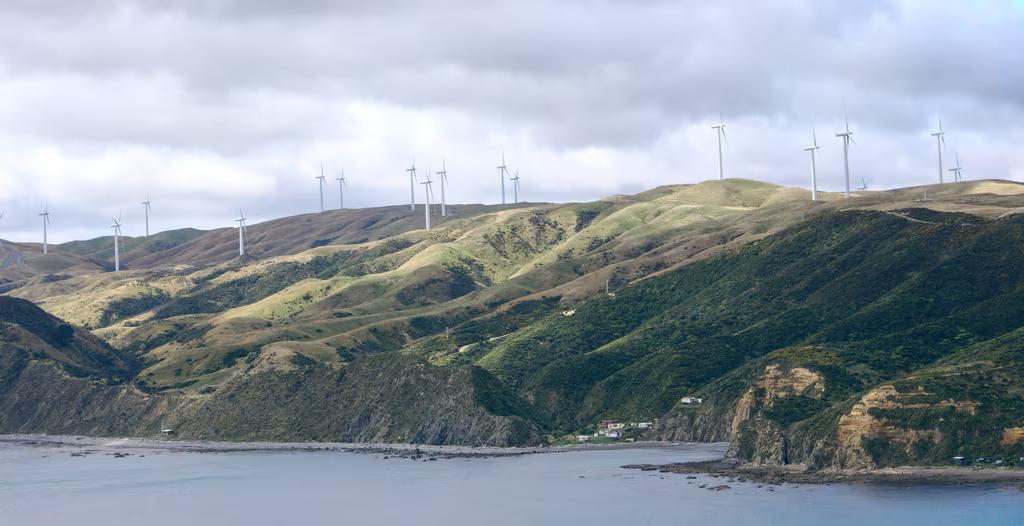
Emissions intensity across New Zealand’s industries
New Zealand’s greenhouse gas reduction targets are a critical part of moving towards a more resilient and sustainable model of production. An important, and underdiscussed part of this conversation, is the notion of emissions intensity: the level of emissions in relation to GDP. By becoming less emissions-intensive, industries can maintain their GDP while reducing their environmental impact. Emissions intensity is also a useful metric because it allows us to assess progress over time, even in industries where emissions are increasing, or GDP is falling.
In this article, we use recently published Stats NZ data to examine changes in emissions intensity across key industries, to better understand how far we’ve come, as well as and explore potential improvement.
Annual emissions are measured in calendar years, and GDP is measured in years ending March. For the closest comparison, we match the December year of emissions against the following March year for GDP so, for example, 2021 emissions intensity is expressed as December 2021 year emissions divided by March 2022 year GDP.
Annual emissions fall sharply in last three years
In a move virtually unheard of in articles about greenhouse gases, we begin with a piece of good news: New Zealand’s total emissions are falling. Chart 1 highlights that over the last three years, the pace of emissions reduction has picked up significantly, with emissions easing by 10%, or 7,300 carbon dioxide equivalent (CO2-e) kilotonnes, between 2019 to 2022. Over the corresponding period (March 2020 year to March 2023 year), real GDP rose 8%, demonstrating our ability to reduce emissions while growing our economic activity.
Together, six key industries have comprised more than 95% of nationwide industry emissions over the past few years: agriculture; mining; manufacturing; electricity, gas, water, and waste (utility) services; construction; and transport, postal, and warehousing. Total CO2-e emissions have declined across all these industries except for construction, where annual emissions are up 4% from 2019.
Emissions intensity down 16% from 2019
The combined effect of these shifts reduced New Zealand’s industry emissions intensity from 308 CO2-e kilotonnes per million dollars of GDP in 2019 to 257kt/$m in 2022, a decline of 16%.1
This reduction was driven by large reductions in the emissions intensity of agricultural, utility services, and transport, postal, and warehousing (Chart 2).
Although overall emissions have increased in construction, emissions intensity fell by 7.6kt/$m, suggesting that processes in the industry have become more emissions-efficient over time. Conversely, GDP in mining fell faster than emissions, increasing the industry’s emissions intensity by 114kt/$m.
Transport sector reducing emissions-intensity most rapidly
Due to relative size differences across industries, those that make the largest contribution to the decline in emissions intensity are not necessarily those reducing their emissions intensity the fastest. Emissions intensity fell 26% in transport between 2019 and 2022, a decline of 10 percentage points more than the total industries average. Utility services also reduced its emissions intensity rapidly, by 19%, followed by manufacturing (15%), construction (7.5%), and agriculture (4.9%). Emission intensity rose 24% in mining, slightly offsetting these improvements.
Still room for improvement
Across these industries, we have identified agriculture and construction as key ”room for improvement” areas.
There are several ways for businesses in these industries to improve their emissions-efficiency.
The New Zealand Agricultural Green Gas Research Centre points out that improving general farm efficiency is key to reducing emissions, and is better for business productivity overall. Their starting points include improvements to feed quality (so that less feed is needed for the same performance), as well as use of technology to support irrigation and fertiliser practices.
In a 2022 paper, the Ministry for the Environment indicated a plan to consult on new requirements for operational efficiency in the Building Code and support the use of lower-carbon materials in construction.
The path forward
So far, we have highlighted how improving emissions-efficiency throughout the economy can reduce total emissions – the idea being that we can maintain the same, or higher levels of activity, for a lower carbon footprint. We also note that some industries are simply experiencing lower levels of activity, which contributes to reducing total emissions.
For example, due to a decline in GDP, annual emissions in mining fell by 5% from 2019, or 63 CO2-e kilotonnes, despite worsening emissions intensity. Agriculture’s total emissions fell 2% in 2022 from the previous year, even as emissions intensity grew slightly, as activity slowed across the sector.
Going forward, particularly as incentives to reduce emissions become more attractive over time, we expect a combination of emissions-efficiency improvements, and lower emissions-intensive activities. How this plays out exactly will depend on relative ability to improve emissions-efficiency, and broader economic trends affecting sectors.
New Zealand has done well to reduce its industrial environmental impact over the last few years. But there is further work to be done to meet our emissions targets and protect the environment for future generations. Innovation that reduces emissions intensity is not only good for the earth, but the long-term productivity and resilience of Kiwi businesses as well.
2 GDP is measured in 2009/10 prices.


















